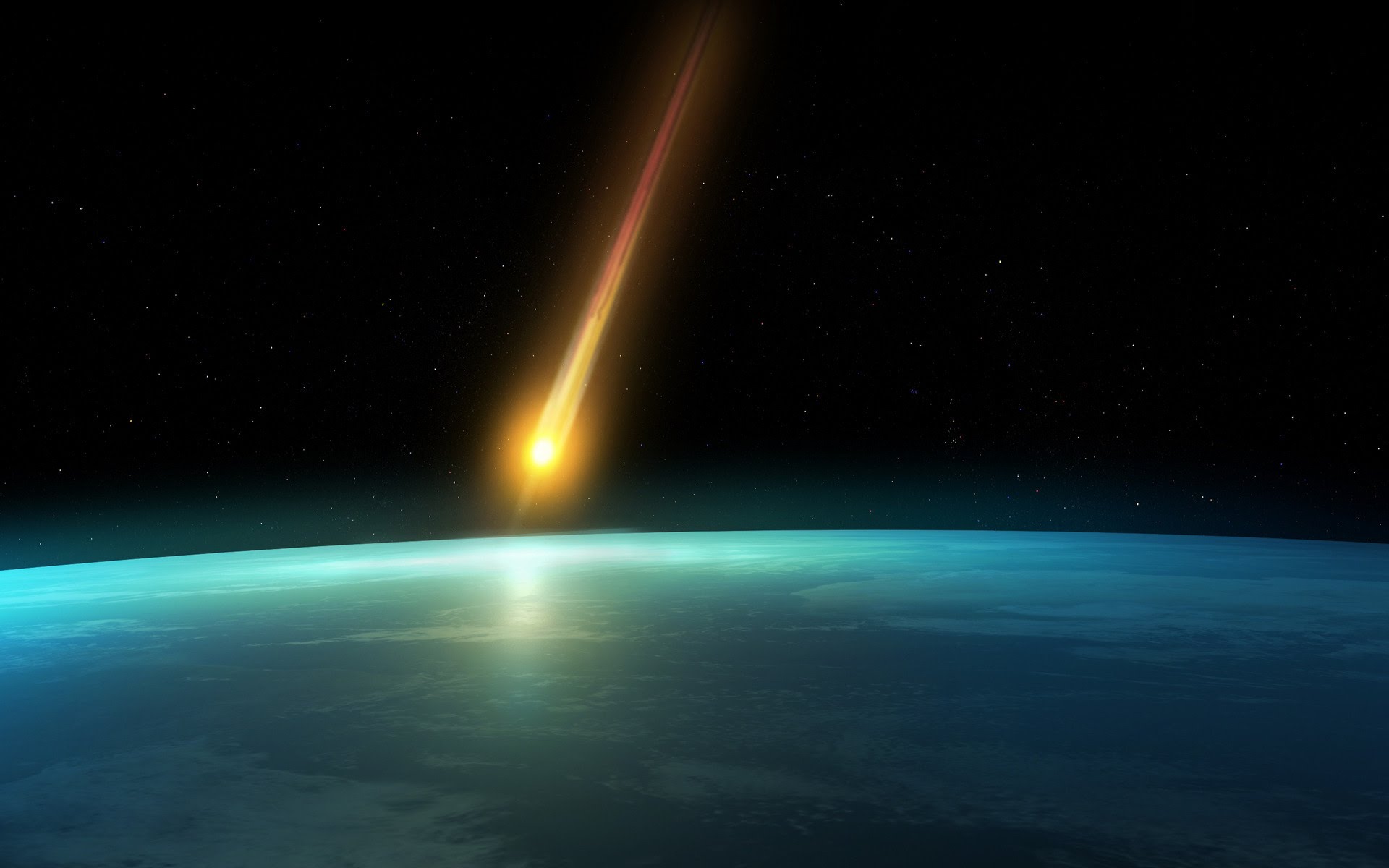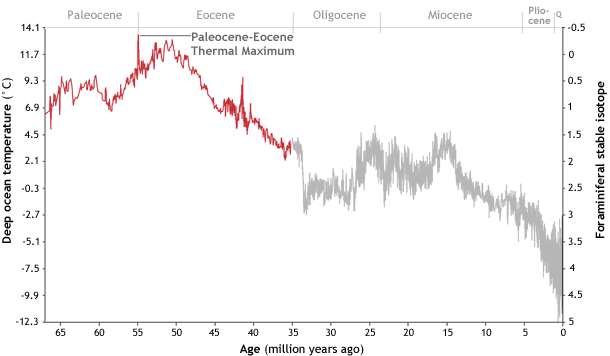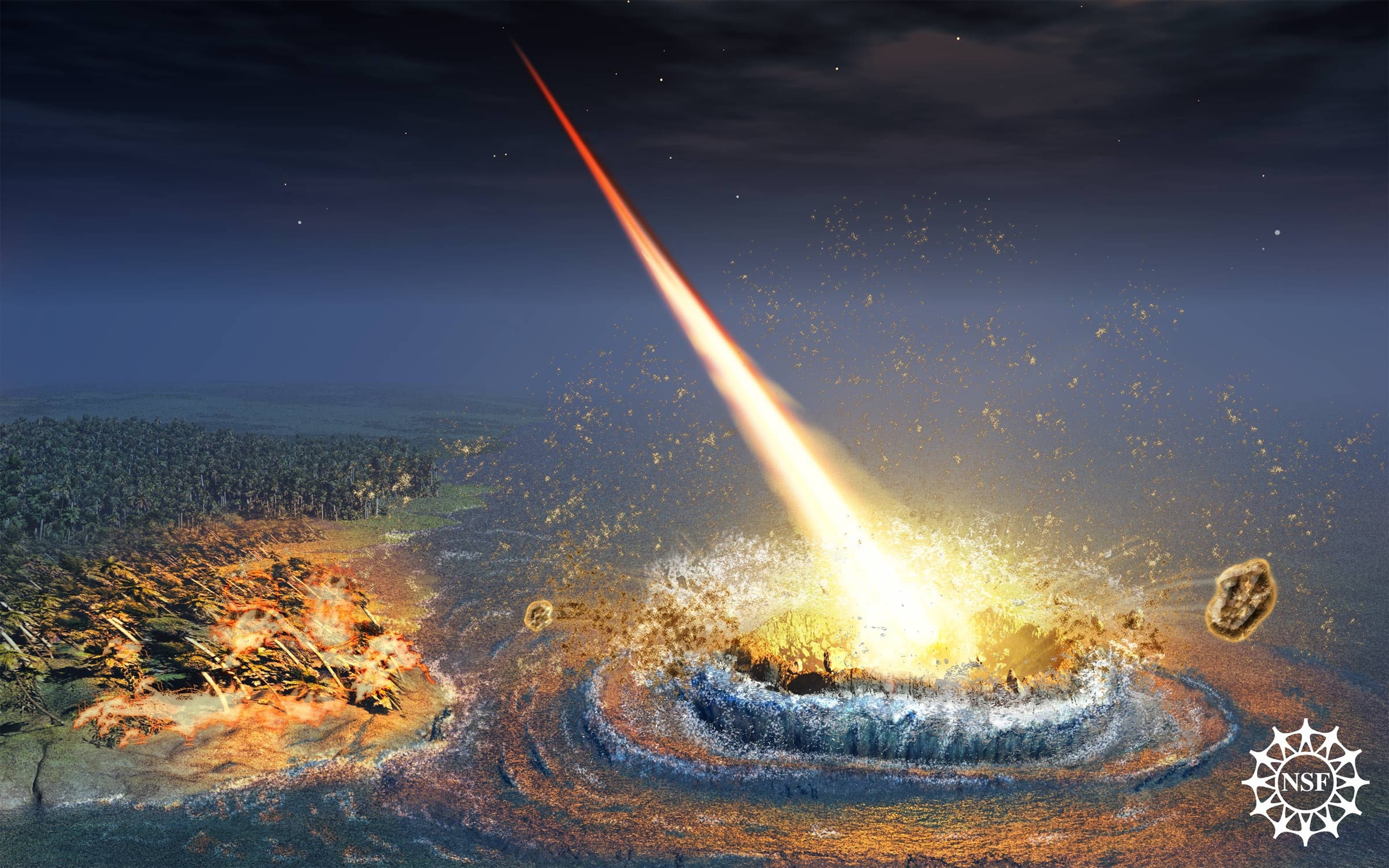The cause of global warming 55 million years ago may be a comet

The amount of carbon dioxide in the atmosphere in our time is constantly increasing. In August of this year, the concentration of CO 2 reached 400 parts per million. Climatologists believe that carbon dioxide in the atmosphere in the near future will definitely not be less. Carbon dioxide affects the Earth’s climate - it is gradually getting warmer. Glaciers are melting, the level of the World Ocean rises. All this has a significant impact on our entire civilization, which has become the cause of warming, generating a large amount of carbon dioxide over the past few decades.
Global warming is nothing new. Something similar has already happened. 55 million years ago, the Earth’s climate also warmed dramatically. Then the change in climatic conditions was accompanied by a change in the composition of the atmosphere and the extinction of many species of living organisms. Scientists call this period the Paleocene-Eocene thermal maximum . According to paleoclimatic reconstructions, the temperature on the continents during this event increased by 8 ° C. The water temperature in the tropical belt was 20 ° C, which is 1.5 ° C more than the current value, in the Arctic seas, warming was much larger, and the increase in the temperature of the surface waters of the Arctic Ocean could be up to 10 ° C. But what caused such dramatic changes?
The reason is known - this is a significant increase in the concentration of carbon dioxide in the atmosphere in a relatively short period of time. As now, this was accompanied by a rapid increase in the average annual temperature. The fact of increasing the concentration of CO 2 55 million years ago is proved. But where did so much carbon dioxide come from at that time that it caused climate change? Now the source is human activity, industry, cars, and so on. But 55 million years ago?
')
Scientists from Rutgers University suggested that the source was a comet. This hypothesis has opponents, but over time it gains more and more supporters.
The history of the Paleocene-Eocene thermal maximum, it can be said, is written with isotopes. A sudden change in temperature can be traced by changing the concentration of oxygen isotopes. In addition, it helps to study the situation and the analysis of carbon isotopes in the rocks of that time. In the period in question, the ratio of various carbon isotopes has changed. For this to happen, a source of carbon must have appeared on Earth, where the balance of different isotopes differs from the balance of isotopes in the atmosphere and hydrosphere.

Scientists suggest that carbon could appear from methane deposits in the form of clathrates at the bottom of seas and oceans. If the bottom temperature suddenly increased, the methane could be released, after which its concentration in the atmosphere abruptly increased. Unfortunately, this hypothesis does not explain the causes of the warming of the ocean floor.
James Wright and Morgan Schaller suggested that the source of carbon could be different. Wright has been trying to convince the scientific community of this since 2003 . He says comets are rich in organic matter, including methane. According to the scientist, a comet with a diameter of 10 km, falling to Earth, can cause a change in the balance of carbon isotopes due to the fact that the substance of the comet enters the atmosphere of the Earth. In 2013, Wright and Schaller stated that they found evidence of the cometary origin of carbon that entered the atmosphere of our planet 55 million years ago.
This evidence, they said, was obtained from a study of sediments in New Jersey. Scientists have found traces of the fall of a large comet. It fell just around the time when global warming occurred. Moreover, a change in the balance of carbon isotopes occurred in just 13 years, which indicates the sudden appearance of a significant amount of this element in the atmosphere, and then in the oceans of the Earth. And this, according to scientists, is evidence that it was the comet that became the source of carbon.
Not all scientists agree with this point of view. Some experts claim that Wright and Schaller did not properly drill the strata of geological rocks, which resulted in distorted results of isotope analysis. But Wright and Schaller say it is not. Moreover, they found in the sediments belonging to the Paleocene-Eocene thermal maximum, round-shaped silicate particles. The size of these particles, called "spherules" is a few hundred micrometers. The number of spherules is maximum in sediments related to ancient global warming, which, according to Wright and Schaller, is another proof of the comet's fall to Earth 55 million years ago.

Sferuly - the product of not only the fall of celestial bodies on Earth. They appear during volcanic eruptions, and the chemical composition of the spherules can vary considerably. The spherules discovered by Wright and Schaller were formed at a temperature of 1750 degrees Celsius. This is higher than the temperature of a substance emitted by a volcano, so, scientists say, they could only form as a result of a large celestial body falling to Earth.
The spherules and the results of their analysis did not convince anyone that the warming of the Earth tens of millions of years ago is associated with the fall of the comet. Opponents of this hypothesis argue that the three points of selection of rocks with subsequent analysis of these rocks are too few to consider the fall of the comet on Earth and its further impact on the planet’s climate as an indisputable fact.
So far, the hypothesis of scientists is still being discussed by the scientific community. Probably, if additional evidence is found for the comet's fall to Earth 55 million ago, the point of view of Wright and Schaller will gain more supporters than it is now.
DOI: 10.1126 / science.aaf5466
Source: https://habr.com/ru/post/398419/
All Articles